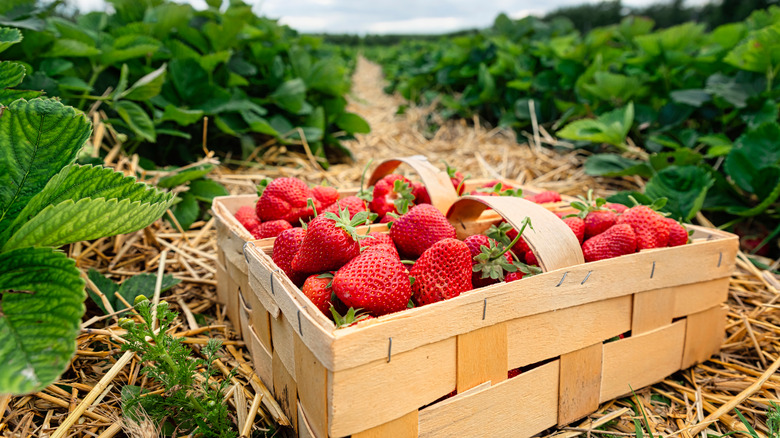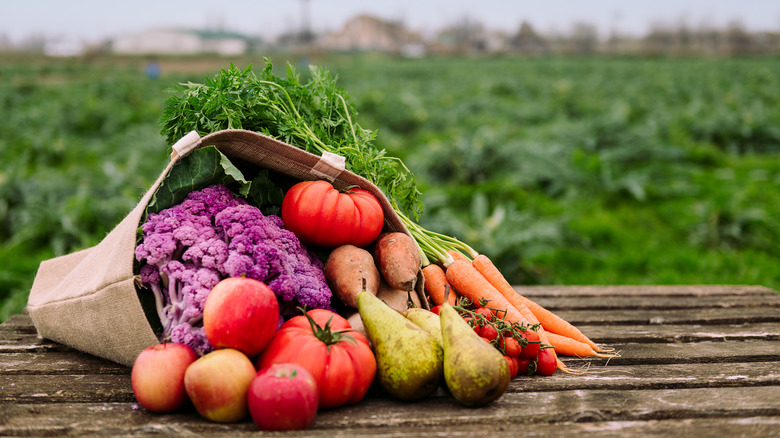What Is The Dirty Dozen?
Finding a variety of organic food options at the grocery store is now the norm, not the exception, in many places. Organic farming has ridden the wave of public enthusiasm for healthier food options and sustainable agricultural practices. According to Harvard Health Publishing, sales of organic foods topped $50 billion for the first time in 2018 — a meteoric rise from just $1 billion in 1990 (via Healthline).
As more people seek healthier food choices, turning to organic produce — which is non-GMO and produced using far fewer, if any, synthetic pesticides and fertilizers — is a natural choice. Also, many people are concerned about the cumulative effect of long-term exposure to synthetic pesticides. Michael Crupain, director of Consumer Reports' Food Safety and Sustainability Center, says, "We're exposed to a cocktail of chemicals from our food on a daily basis. It's not realistic to expect we wouldn't have any pesticides in our bodies in this day and age, but that would be the ideal. We just don't know enough about the health effects" (via HuffPost).
But there's a downside that everyone who has bought organic knows well: The price tag for organic produce is often much higher than for conventional produce. That's where the "dirty dozen" comes in. The phrase refers to a list compiled each year by the Environmental Working Group (EWG), ranking the 12 (conventionally-grown) produce items that contain the highest levels of pesticide residue. The rankings are based on thousands of tests conducted by the FDA and USDA on many different kinds of produce samples (via Food Revolution Network).
The 'dirty dozen' can help you make smart choices
Ready to know the top 12 offenders? In 2021, the dirty dozen, from most dirty to least, included strawberries, spinach, kale (with collards and mustard greens), nectarines, apples, grapes, cherries, peaches, pears, bell and hot peppers, celery, and tomatoes (per Food Revolution Network).
What does this mean for the consumer? If you make an effort to eat organic, but can't afford an all-organic diet, this list can help you prioritize your buying choices. Ilyse Schapiro MS, RD, CDN, told Well+Good, "It's a personal decision, and organic is definitely more expensive, but it can be worth it — especially on certain foods that can contain lots of added hormones, toxins, [and] pesticides when grown conventionally." Additionally, Deborah Gerszberg, a nutritionist at Columbia University's Pancreas Center, says, "It is most important for young children, pregnant women, and those with weakened immune systems to eat organic food" (via HuffPost).
The most important thing though, when it comes to fruits and vegetables, is eating plenty of them — whether they're organic or not.


